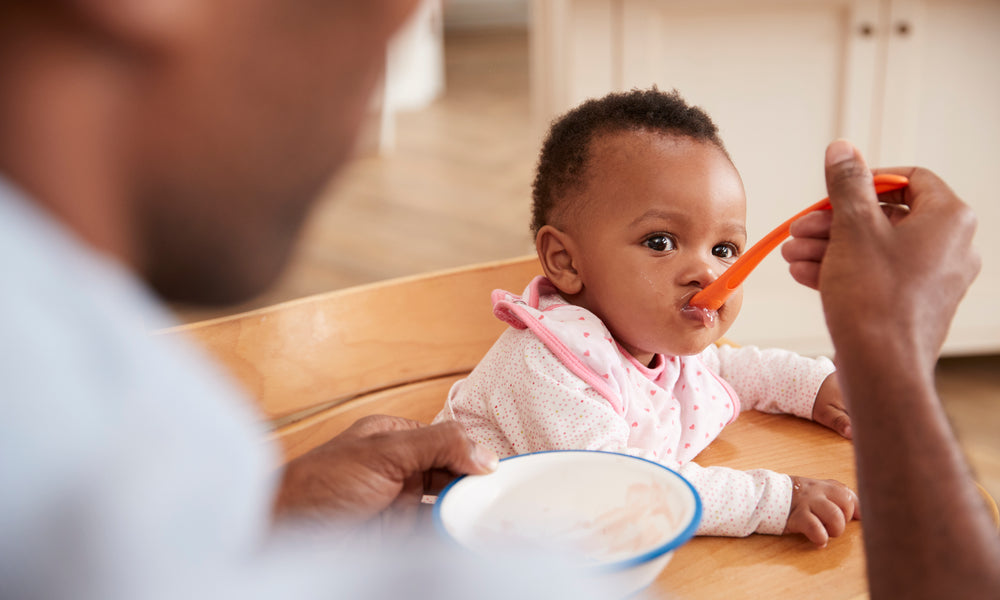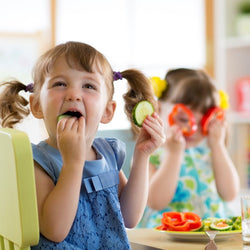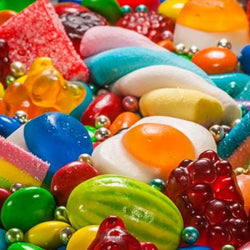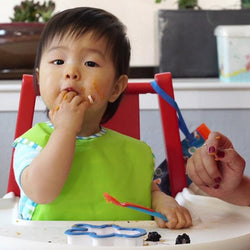How to Make Homemade Stage 1 Baby Food

by Baby Earth
May 21, 2018
Your baby has finally arrived at the important stage in his or her life when he or she will start eating solid foods. It's an important milestone and one that you don't want to take for granted because you'll want to make the right choices when deciding what foods to introduce.
How to Introduce First Foods
When introducing first foods to your child, it's important to introduce one food at a time, so that you can monitor if your child is allergic or sensitive to certain foods.
It's best to introduce one new food every few days. Once you've introduced a food and know that your child has no sensitivities, you can add it to another food to create delicious combinations and help widen your baby's palate.
Prepackaged or Homemade?
The next decision you'll need to make is whether to feed your child prepackaged baby food or homemade baby food. Both options have pros and cons, but homemade will always win out in the taste department. (Plus, you'll know exactly how it's been prepared and packaged so you'll have peace of mind).
Article Continues Below Advertisement
However, homemade baby food does take slightly more time than grabbing jars or pouches at the grocery store, but in all honesty, it's pretty darn easy to make your own.
If you're in a pinch, though, prepacked baby food has come a long way since we were babies. There are now multiple organic options available on the days you just need to grab and go.
What is Stage 1 Baby Food?
Stage 1 baby food, or food that is introduced starting at 4-6 months (the American Academy of Pediatrics recommends waiting until 6 months and cautions never to give solid food before 4 months), is food that is a thin, non-chunky consistency that is easy for young babies to swallow. It's very important to make sure food at this stage doesn't have any chunks because of a baby's strong tongue-thrust reflex.
Best Stage 1 Baby Foods
The best foods to introduce during the first stage of solid food introduction are foods that are nutrient-rich and easy to digest. While rice cereal has, traditionally, been the recommended first solid food for infants, recent research has shown that grains can be harder for young infants to digest, so it's better to start with fruits and vegetables.
Article Continues Below Advertisement
Best Fruits to Introduce:
- Avocados
- Bananas
- Apples
- Pears
- Plums
- Apricots
- Peaches
Best Vegetables to Introduce:
- Sweet potatoes
- White potatoes
- Green beans
- Squash
- Carrots
- Green peas
How to Make Homemade Stage 1 Baby Food
Making organic homemade baby food is easy, I promise. All you need to make your own baby food is fruits, vegetables, a way to cook your fruits and vegetables, and a blender, food processor or Baby Bullet (you can also use a hand blender, but I wouldn't recommend it for time and food consistency).
For everything except bananas and avocados, you will need to cook it before blending, but make sure you don't use any oil or butter in the cooking process because it's hard for babies to digest fat and dairy. To cook the vegetables and fruit, you can either steam them or roast them in the oven.
To steam fruits and vegetables, you can either use a pan with a steaming insert or put a small amount of water in the bottom of a saucepan, cover, bring to a boil, and let cook until vegetables are very tender (Note: Make sure that you use enough water so that it doesn't boil dry before the vegetables are cooked - about a half an inch to an inch of water in the bottom of the pan).
Article Continues Below Advertisement
To roast your fruits and vegetables, set your oven to 400 degrees, lay your fruits or vegetables out in a single layer on a sheet pan, and roast until tender - roasting time will depend on what you are preparing.
Once your fruits and vegetables are ready, add them to your blender, food processor or baby bullet, add a small amount of water and blend.
After blending until smooth, check consistency. If the food is still too thick, add more water until the fruit or vegetable has a smooth, liquid texture.
Article Continues Below Advertisement
Storing Baby Food
The easiest way to have homemade baby food available at all times is to make a large batch and freeze it. You can then just thaw what you need each day.
The best, and most ingenious, way I've seen to freeze baby food is to freeze it in ice cube trays. Each cube is equal to approximately one ounce so that you can measure your baby's food out according to cubes.
To use the ice cube tray freezing method, pour prepared baby food into the cubes, freeze until solid and then store frozen food cubes in freezer bags (Note: Make sure to write date/food type on bag, so that you will know how long you have to use it. Baby food can be kept in the freezer for 3-4 months).
Another way to freeze and store baby food is to use breastmilk storage bags. They are the perfect size and shape to freeze single servings of food.
With these simple tips, and guidelines, making homemade baby food once your baby is ready to start eating solid foods should be a breeze. Remember, every child is different, so it is always important to pay attention to your child's cues as you begin this journey into stage 1 baby food with them.







